Sundtek MediaTV HD ISDB-T is the world's first USB ISDB-T (BCAS/Japan is available uppon request)
, AnalogTV, Composite, S-Video, FM-Radio device which is fully supported with Linux, our technology provides support for the entire 2.6.x Linux Kernel Series, unpatched Kernels are supported from 2.6.15 on. An installation usually takes a few seconds only.
http://www.sundtek.com/docs/sundtek_smart_facts.pdfThe driver installation is currently mainly done on the console, we are working on providing a graphical installer lateron. The driver is developed by Sundtek Ltd. and runs as normal application (in userspace), if unexpected problems occur the system will not be affected by it, aside of that it has the advantage that it is not bound to any particular kernel version which makes difficult compiling unnecessary.
Minimum System requirements Linux 2.6.15/libc2.4+ 32 or 64 bit (which is basically supported by all distributions which have been available for the last 4 years/since 2006), 1.5 Ghz
Supported Architectures:






* Intel/AMD x86 (32/64 bit)
* ARM
* IBM PowerPC (eg. Sony Playstation 3 - first revision)
* MIPS
* further builds are available uppon request
This installer supports following operating systems:


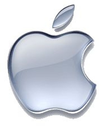
* Linux
* FreeBSD 8.0 (will be released soon)
* Apple (Sundtek MediaTV Gold/will be released soon, mediaclient commands will work, although the Apple support comes with an extra Mac based installer and extra TV application)
Please note that the linux 2.6.27 and 2.6.28 series have a bug in the USB System wich makes the memory usage of the Linux system grow, this causes the system to run out of memory after some time. You can read more about this issue and how to fix it on the
Linux USB Mailinglist, it is probably easier to use Linux 2.6.15 - 2.6.26 or 2.6.29+.
The latest driver version can be downloaded from the
Driver Boardopen a console and run following line as root
$ wget http://www.sundtek.de/support/sundtek_netinst.sh # this always points to the latest available driver
$ chmod 777 sundtek_netinst.sh
$ sudo ./sundtek_netinst.sh
Welcome to the Sundtek linux driver setup
Legal notice:
This software comes without any warranty, use it at your own risk
Nutzungsbedingungen:
Sundtek übernimmt keinerlei Haftung für Schäden welche eventuell durch
das System oder die angebotenen Dateien entstehen können.
Do you want to continue [Y/N]:
Wollen Sie fortfahren [J/N]:
y
stopping old driver instance...
installing driver to /opt
unpacking...
checking system... 64Bit System detected
installing...
finalizing configuration... (can take a few seconds)
installing libmediaclient interception library
Starting driver...
done.
for identifying the device in the system you can run following command:
$ /opt/bin/mediaclient -e
**** List of Media Hardware Devices ****
device 0: [ Sundtek ISDB-T] ISDB-T, ANALOG-TV, FM-RADIO, REMOTE-CONTROL, OSS-AUDIO
[ISDB-T]:
FRONTEND: /dev/dvb/adapter0/frontend0
DVR: /dev/dvb/adapter0/dvr0
DMX: /dev/dvb/adapter0/demux0
[ANALOG-TV]:
VIDEO0: /dev/video1
VBI0: /dev/vbi0
[FM-RADIO]:
RADIO0: /dev/radio0
[REMOTECONTROL]:
INPUT0: /dev/mediainput0
[OSS]:
OSS0: /dev/dsp0
DeinterlacingDeinterlacing is also supported:
Original (scrolling text):

Sundtek Enhanced Quality:

Activate deinterlacer:
$ /opt/bin/mediaclient -d /dev/video1 --vfilter=on
Deinterlacer deaktivieren:
$ /opt/bin/mediaclient -d /dev/video1 --vfilter=off
Analogue TV/Composite/S-Videofor starting analogTV with tvtime:
tvtime -d /dev/video1
by default most linux tv players do not support digital audio properly, in order to fix that problem our driver supports internal audio processing, which means that the driver automatically tries to play the available data to the default soundcard, while the TV application is just in charge of displaying the video.
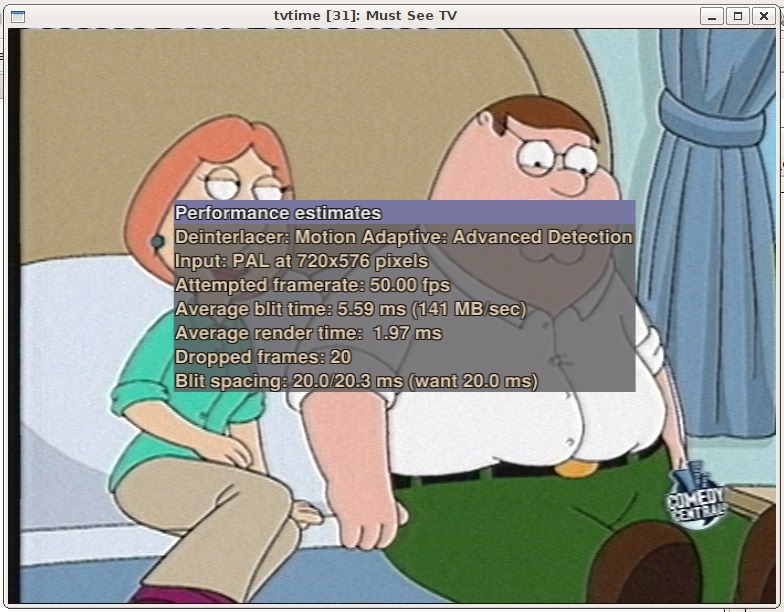
For using the device with mplayer:
$ mplayer tv:// -tv driver=v4l2:device=/dev/video1
MPlayer SVN-r29305-4.3.2 (C) 2000-2009 MPlayer Team
Playing tv://.
TV file format detected.
Selected driver: v4l2
name: Video 4 Linux 2 input
author: Martin Olschewski <olschewski@zpr.uni-koeln.de>
comment: first try, more to come ;-)
Selected device: Sundtek MediaTV
Tuner cap: STEREO
Tuner rxs:
Capabilites: video capture VBI capture device tuner audio read/write streaming
supported norms: 0 = PAL-BG; 1 = PAL-DK; 2 = PAL-I; 3 = PAL-M; 4 = NTSC-M;
inputs: 0 = Television; 1 = Composite; 2 = S-Video;
Current input: 0
Current format: YUYV
The driver automatically tries to figure out the correct audio playback.
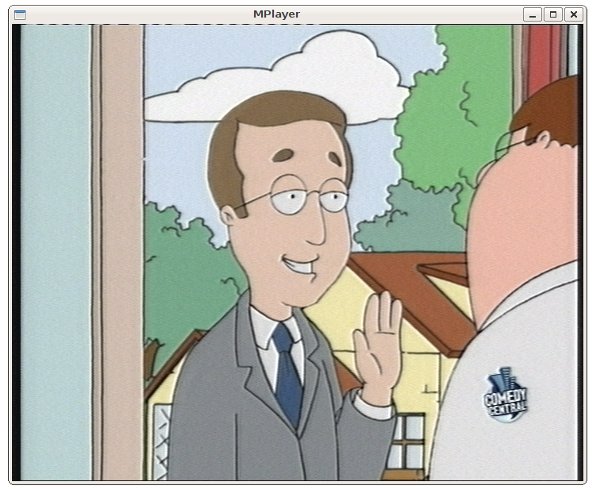
For using analogue TV with vlc, just start up VLC and select the corresponding capturedevice eg. /dev/video1 in our case
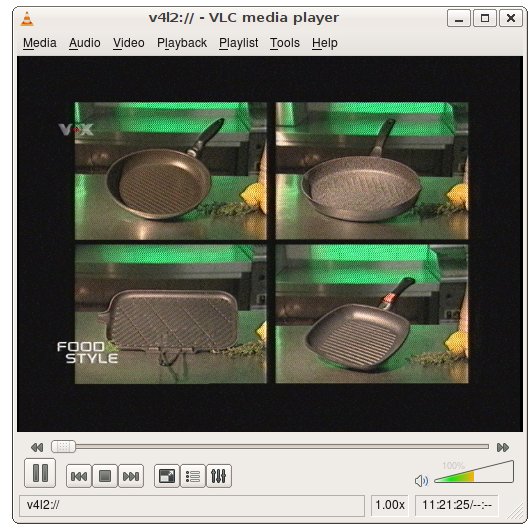 FM Radio
FM Radio/opt/bin/mediaclient -f 90100000 -m RADIO -d /dev/radio0 -t 0
/opt/bin/mediaclient -m RADIO -d /dev/radio0 -c internal
/opt/bin/mediaclient -m RADIO -d /dev/radio0 --mute off
for disabling audio in the background:
/opt/bin/mediaclient -m RADIO -d /dev/radio0 --mute on
ISDB-TPlease note the device very much does all the carrier detection, because of that only the Frequency is needed in order to tune in an ISDB-T transponder
mplayer$ /opt/bin/mediaclient -m ISDBT -f 113000000
Using device: /dev/dvb/adapter0/frontend0
Checking for lock:
. [LOCKED]
$ mplayer /dev/dvb/adapter0/dvr0
oder
$ cat /dev/dvb/adapter0/dvr0 | mplayer -cache 10240 -
 [/img]
[/img]
to remove the driver from the system:
./sundtek_netinst.sh -u
Sundtek linux driver setup
stopping driver...
removing driver
.......
driver successfully removed from system
PowersavingThe powersaving will be activated after 15 seconds of inactivity, after this time the device will start to cool down. Powersaving also increases the lifetime of the USB TV device.
Troubleshootingit's possible that some applications already access the device driver during the bootup. This will cause the device to be set to the corresponding device mode.
To check which applications are accessing the driver you can run following command:
$ /opt/bin/mediaclient --lc
**** List of Media Clients ****
/dev/dvb/adapter0/frontend0:
No client connected
/dev/dvb/adapter0/dvr0:
No client connected
/dev/dvb/adapter0/demux0:
No client connected
/dev/video1:
329 ... tvtime
/dev/vbi0:
No client connected
/dev/radio0:
No client connected
/dev/mediainput0:
No client connected
/dev/dsp0:
28289 ... mediasrv
please note tvtime does not support audio playback by itself, the multimedia framework itself is taking care about it, this also shows up the audio process being connected to the driver.
In order to disconnect (not to kill) tvtime from the driver following command can be used:
$ /opt/bin/mediaclient --dc 329
PulseaudioThere are some useful pulseaudio tools available (for example pavucontrol). Pavucontrol allows to individually configure the audio volume. Since pulseaudio is not stable yet it might happen that the driver switches back to Alsa during the runtime.
pavucontrol:
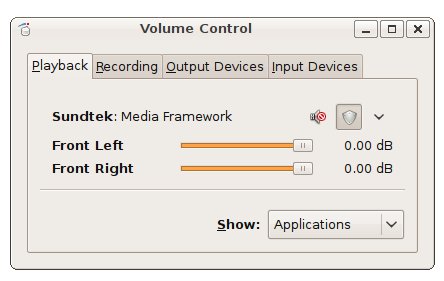
pavumeter:

NVidia graphicdrivers:
http://www.nvidia.de/Download/index.aspx?lang=deATI graphicdrivers:
http://support.amd.com/de/gpudownload/Pages/index.aspxRestricted Formats/Codecs Suse:
http://opensuse-community.org/Restricted_Formats/11.0http://opensuse-community.org/Restricted_Formats/11.1